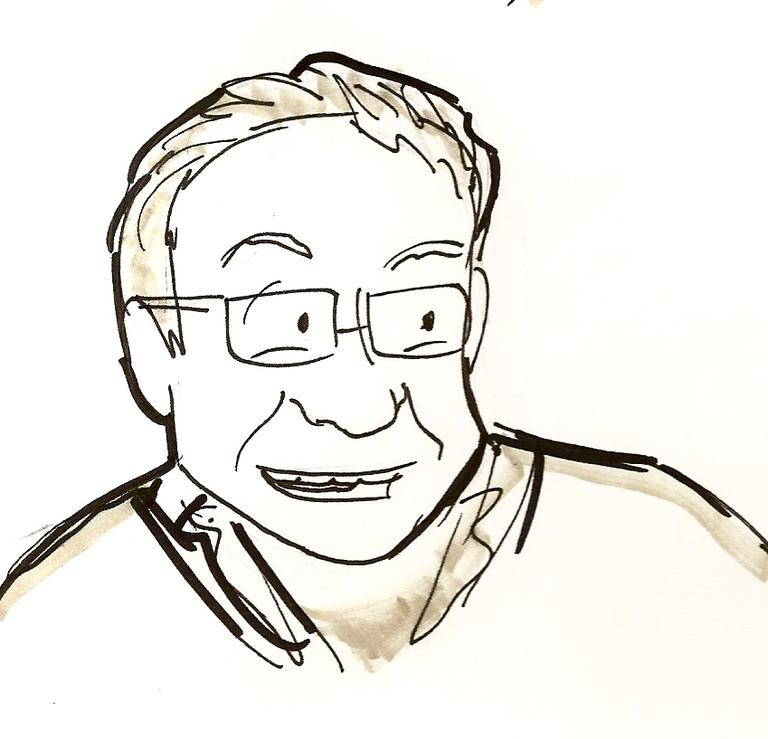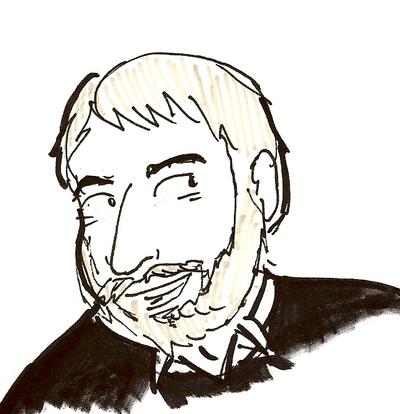Advertisement
Payne & Domke: Campaigns Need To Do Online Media Right
ResumeFormer Alaska Gov. Sarah Palin is getting involved in New Hampshire's U.S. Senate race.
Palin endorsed former state Attorney General Kelly Ayotte in the field of four Republicans vying for the party's nomination, lauding Ayotte as a "Mama Grizzly" — a term she explained in a recent Web ad:
Palin has kept a national profile since resigning as Alaska's governor last year, in part through Web ads, Tweets and Facebook status updates.
Free media sources have their advantages: they're largely free, nimble and they create political buzz. But do they make a difference? WBUR’s political analysts — Democrat Dan Payne and Republican Todd Domke — try to answer that vis-à-vis the Massachusetts gubernatorial race.

Dan Payne (D): That Palin YouTube video has been viewed almost 400,000 times. That’s a lot of eyeballs. Every time I hear Palin talk, I feel like she’s creating Democratic votes. Her arguments and manner of speaking are so strange, I don’t get it. She recently told Muslims to “refudiate” — she added a new word to the English language — plans to build an Islamic center near Ground Zero in New York City.
Mama Bears? I don’t know if it bears on Republican decision-making but the toughest votes for her to get are non-Republican women, who remain offended and appalled by the prospect of her as a potential president.
Whenever she talks about Alaska, she distances herself from the rest of us in the Lower 48. I hope you’ll bear with me when I say she is a celebrity, not a serious political figure. Other than her distortion claiming President Obama wanted "death panels," I can’t think of one other idea she’s put into the national conversation. She always seems loaded for bear but I can’t bear to hear her.
Recently, Massachusetts state Treasurer and Independent candidate for governor Timothy Cahill created a Web ad to respond to televised attacks by the Republican Governors Association. So far, the video has been seen just 2,700 times.
Web-only ads are like press releases. They may get some media attention but they don’t shift public opinion.
Dan Payne (D)
Web-only ads are like press releases. They may get some media attention but they don’t shift public opinion. When the RGA ran a million dollars-worth of TV commercials against Cahill, he replied on his website. He didn’t get bupkis for that. The only people who saw it were those who had to — reporters, members of his campaign staff and employees of the treasurer’s office. He would’ve reached as many people by throwing paper airplanes with his rebuttal printed on them out of State House windows.
Even though so few people are watching these YouTube clips and Web ads, campaigns create them for several reasons: The Internet is practically free. Compared to TV advertising, it’s Building 19. Second, you can communicate to your supporters directly without the filter of the news media. Third, you can test an idea or try to influence how the news media see your campaign. Fourth, Obama, and Howard Dean before him, proved that you can raise big money online through millions of small contributions.
Two of the great myths of Sen. Scott Brown's victory are that he won with help from the Tea Party and that it was the Internet that got him elected. The Tea Party barely existed when Brown ran — he said he’d never heard of them. The business about the Internet electing Brown is being peddled by — guess who? — those who handled Brown’s Web media. He did raise a lot of money online. But you can’t Tweet or Facebook your way from being down 20 points down to a five-point win in less than a month.
The state Democratic party has built a website criticizing Republican Charles Baker's Big Dig involvement. They are trying to show that Baker was the state’s chief financial officer when plans for paying for the Big Dig were drawn up. He claims that he was “one of 50” architects, but The Boston Globe discovered that his fingerprints were on every aspect of state financing.
There are three reasons why they want to pin the Big Dig on Baker: First, it puts Baker right into the State House when he’s trying to run as an outsider. Second, it calls into question his truthfulness in saying he was just "one of 50." Third, his financing plan for the Big Dig essentially froze out funds for other transportation projects in the state. As they say in finance, Big Dogs eat first. And in transportation, the Big Dig ate everything.
Gov. Deval Patrick's campaign created an ad they're calling a satire on the negative ads Baker's camp released. Even though Patrick has promised not to "go negative" in the race, he is breaking his promise, as he should. And he will do so again and again before the campaign is over. Just about every candidate in America pledges to stay positive, but the first time they get attacked by an opponent, they feel justified in fighting back.
Patrick's commercial is quite odd. I know Sydney Asbury, his campaign manager, and she’s smart and dedicated and does a nice job making the pitch. I get it, it’s satire. I like satire. I do it myself. But this has no clout. It just says, "We made up this TV spot and, by the way, that’s what Charlie Baker is doing." It’s so subtle, Palin wouldn’t get it. She’d “refudiate” it.
The candidates' websites reflect their subjects. Patrick's is lively, colorful (in every sense), reaches out and asks you to join the cause. It’s a half-full-glass, upbeat and features average people of all ages and races. He’s selling the state, not himself. He feels correctly, I think, that he’s got an easier time making people feel good about their state than they do about him. If they feel the state is moving in the right direction, they’ll give him a second chance. If not, he’s a goner.
Baker’s site is quieter, more formal; flatter, less lively. If Patrick’s is a movie, Baker’s is a newspaper. In Patrick's videos, people are enraptured by the governor. In Baker’s, people are distracted and distant. Baker’s website rests on the proposition that things are bad in Massachusetts and, if you agree, Charlie’s your candidate. Baker’s appeal to citizens is there, but it’s not the central pitch. Baker believes we are in trouble — the glass is half empty.
Cahill’s website is clunky, looking like a restaurant menu. His video is dated, featuring him announcing his candidacy, which is several months old and feels staged and scripted. What struck me is that he’s running as an Independent but there’s nothing innovative or new looking. He plays his current TV spot on the front page of his site. It ain’t that good on TV; it’s nothing special online.
I give the advantage to Patrick because people who go to a website are pre-sold. You can assume they are in the market the same way a car salesman knows you’re interested in a Ford if you walk into a Ford showroom. The idea is to get them to take a test drive and Patrick's site does that well.

Todd Domke (R): Palin’s recent Web video about “mama grizzlies” went viral because it was immediately reported and analyzed by the traditional media. Nearly every talk show and national TV news program ran about a 30-second clip of it and then speculated about whether it signaled a "Palin for President" candidacy. It was that free publicity in the traditional media that drove 400,000 Palin fans to YouTube.
Palin has been savvy in using social media to get her views out. An advantage to her using Facebook as a platform is that she can endorse a candidate without flying to that state and still make big news — without having to answer questions from the media.
Remember when she used Twitter to say that the Democrats’ proposed health care reform legislation would allow what she called “death panels?" That created a firestorm in the media, and then Democrats in Congress rewrote the part she considered objectionable.
One of the reasons political leaders are using social media more to get their message out is that traditional media aren’t covering political news as much as they used to. For example, The Boston Globe and local Boston TV stations don’t devote as much coverage to politics as they did 10 years ago. Yet in recent years many more voters have become interested and active in politics. So they go online to find out what’s happening.
Most voters will never go to the campaign websites, but for activists and opinion leaders, the Web is a battlefield.
Todd Domke (R)
While Palin’s Web video attracted a lot of attention, Cahill has only gotten 2,700 viewers for his Web ad responding to the RGA attack ads. Coincidentally, 2,700 is the number of people in this state with the name Cahill. It's a big family reunion, but online, it’s not a big number.
There are a lot of things that can make a video go viral: celebrity, humor, cleverness, entertainment — Cahill’s ad had none of that. He doesn’t have the star power or fan base of a Palin. His ad wasn’t clever or funny or sensational. It was basically a candidate saying, “Don’t pay attention to the negative ads. I’m really a nice guy.”
Web videos go viral by word of mouth, by people e-blasting their friends, or if it’s mentioned in talk shows and news programs. But it’s got to be interesting in the first place. If it’s just a typical political ad, it goes nowhere.
The state Democratic Party created a website critical of Baker’s Big Dig involvement. Sometimes a campaign might create a micro-site like that because the issue is too complicated to be expressed in 30 seconds or 140 characters. And it’s a way to psych-out the opposition, forcing them to either respond and make the issue a bigger deal, or remain silent and have to privately reassure their own supporters.
The Patrick campaign seemingly broke his promise not to “go negative” by posting a Web video attacking Baker that supposedly is a “spoof” of the RGA ads. I guess spoofery is not negative unless you are the one spoofed. That Web video has only been viewed by a small number of people, so it doesn’t seem like a negative ad in the usual sense of going public with an attack.
A spoof should be entertaining. This one, though, seems like it’s for the humor-impaired. Patrick’s campaign manager has to appear at the end, lamely explaining that it’s a spoof. Humor should not have to be explained.
Each gubernatorial candidate has a website that reflects his campaign. Patrick’s site is focused on organizing and giving his organizers the tools and information they need.
Baker’s site is just as interactive, with all the functions and features of an expensive site. It looks a little more candidate-centered, trying to convey an upbeat personality because Baker hasn’t been able to do that through news coverage. But the site is a little cluttered — too many things compete for the visitor’s attention.
Cahill’s site struggles to explain what his being an Independent should mean to voters. The proof that his website is not persuasive is his declining fundraising numbers. A site must be effective in soliciting and re-soliciting donors. His is not.
Most voters will never go to the campaign websites, but for activists and opinion leaders, the Web is a battlefield. If you’re not campaigning online, you’re missing in action.
